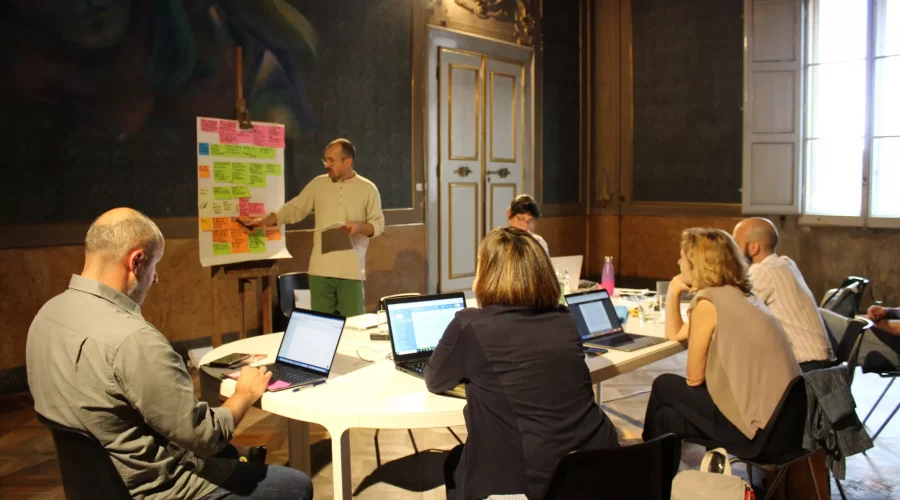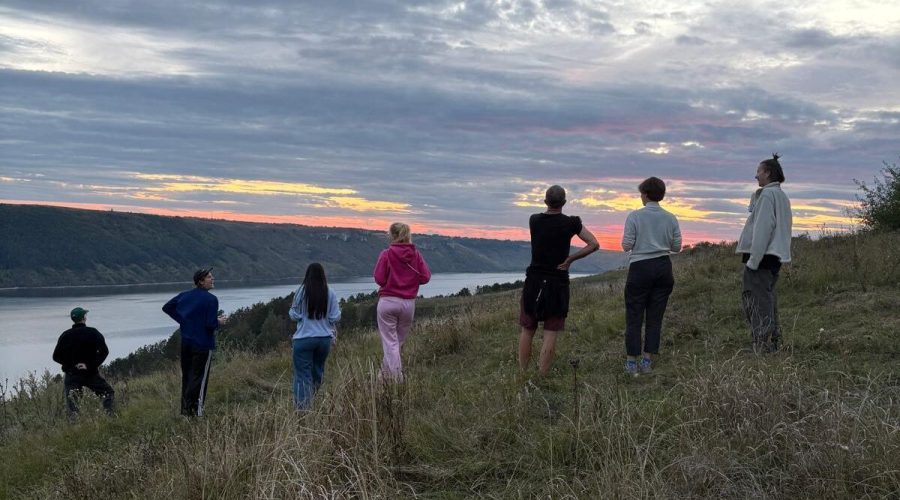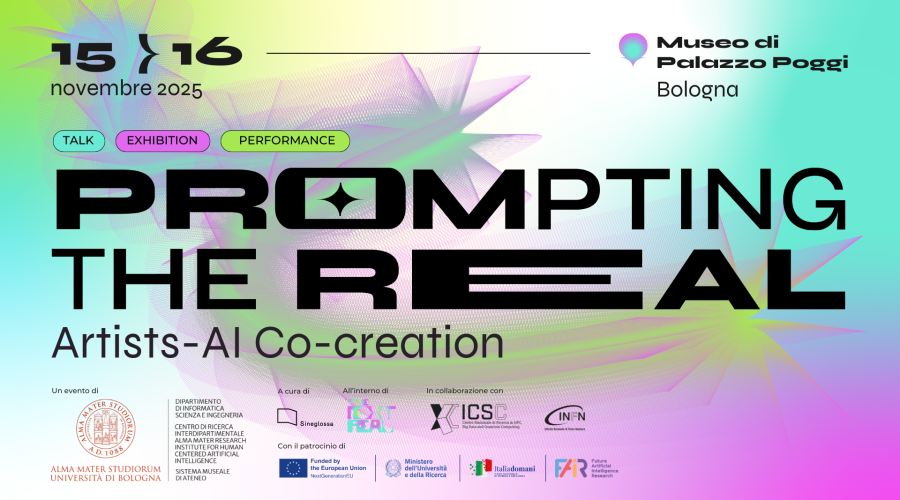What is this about?
On February 7, 2025, at the Tecnopolo in Bologna – as part of ART CITY Bologna 2025 and on the occasion of ARTEFIERA – Sineglossa presented The Models, an interactive audiovisual installation developed by the London-based duo dmstfctn during an artistic residency focused on how to challenge conspiracy fantasies through the enchantment of truth.
The residency was possible thanks to the collaboration with CINECA and ART-ER, the patronage of the Emilia-Romagna Region and the Bruno Kessler Foundation, and the contribution of the European Digital Deal project, funded by the Creative Europe program of the European Union.
The event was the fifth appointment of the The Next Real festival – a program of exhibitions, talks, and workshops dedicated to the relationship between art and artificial intelligence, organized by Sineglossa in Bologna until June 2025.
In addition to the talk and the presentation of the artwork, the event program included a free guided tour (led by CINECA’s technical staff), of Leonardo, the most powerful supercomputing system in Europe, whose capabilities were made available to dmstfctn for the development of The Models.
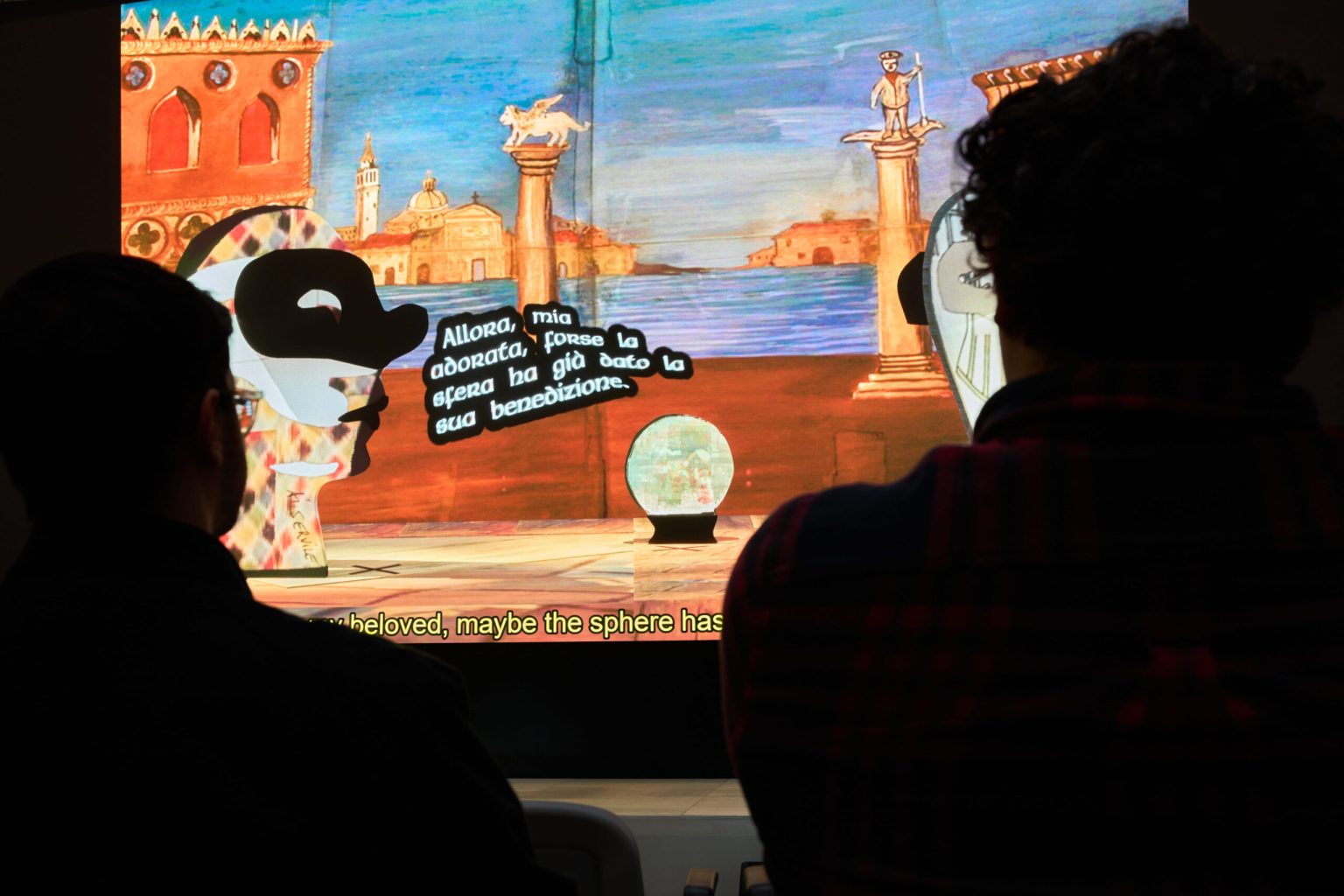


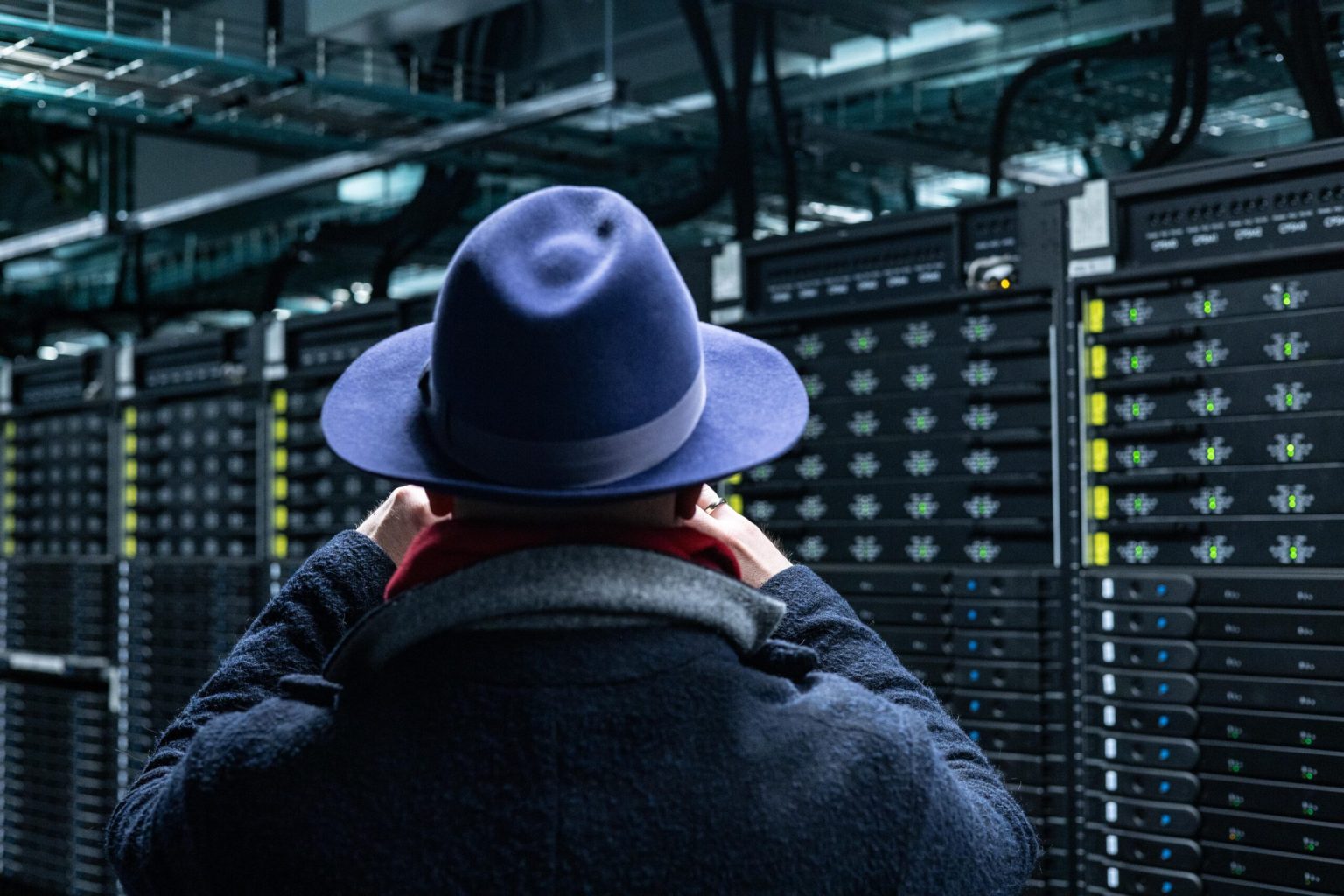
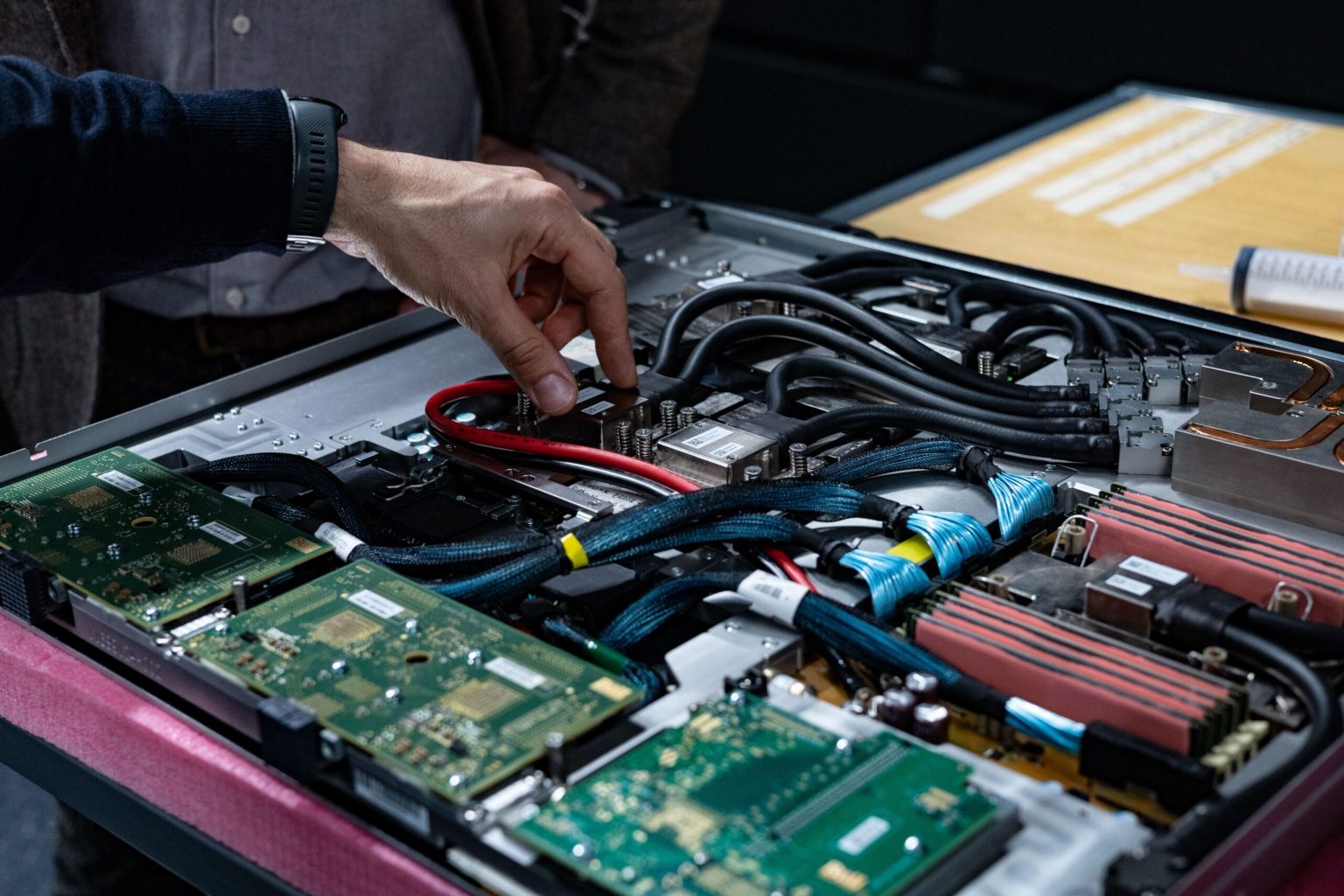
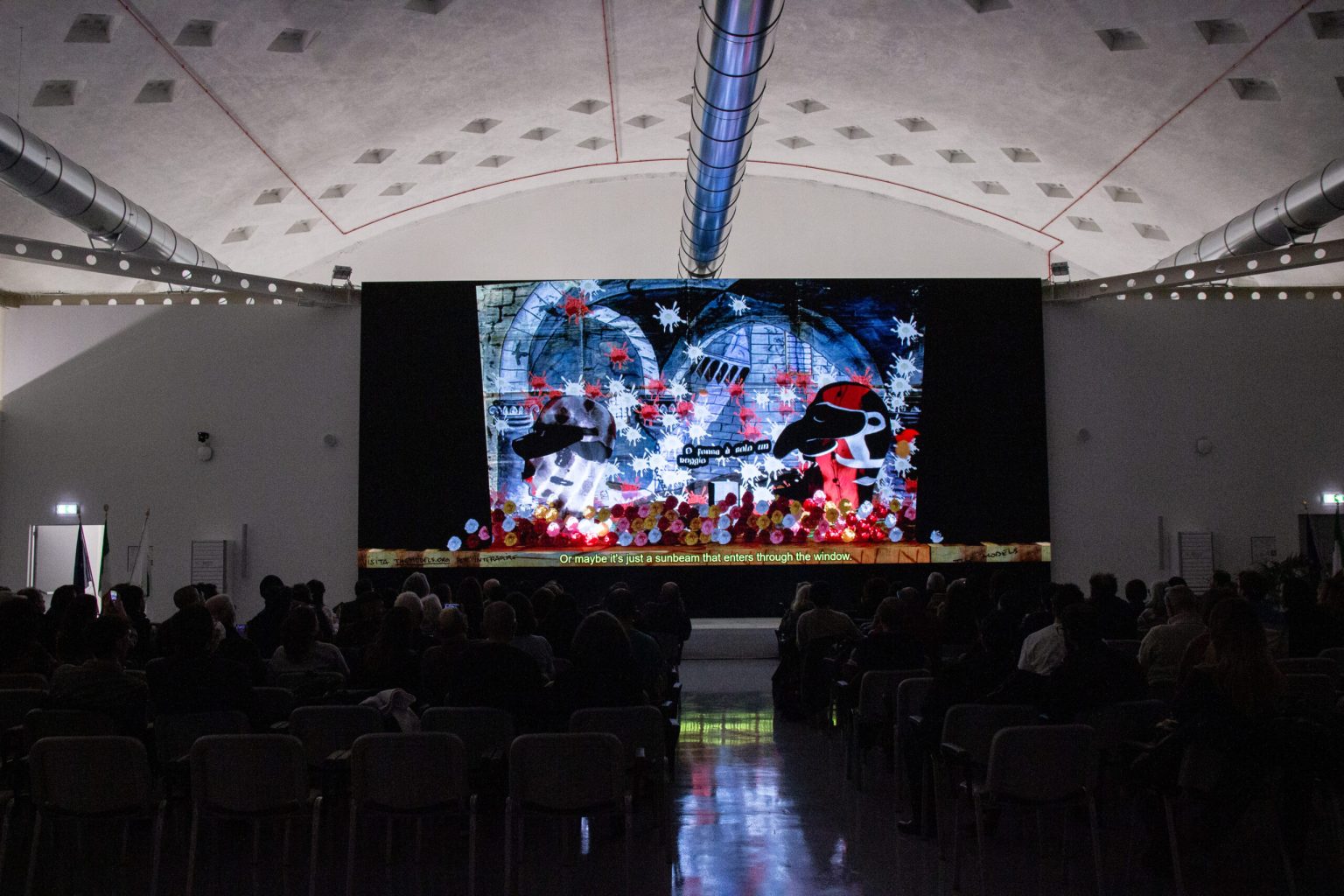

Read also
Guest Speakers
The inauguration of the installation opened with greetings and acknowledgments from the institutions who collaborated in the realization of the artistic project: Emilia-Romagna Region and Cultural Heritage Department, CINECA, ART-ER.

The Regional Minister for Culture, Parks and Forestry, Biodiversity Protection and Enhancement, and Equal Opportunities of the Emilia-Romagna Region, Gessica Allegni, emphasized the importance of keeping the issue of disinformation at the forefront of the international political agenda and in the minds of those representing citizens in institutions.
Artificial intelligence can change our approach to culture for better or for worse. Together with digitization processes, it can help us create, preserve, strengthen, and protect our cultural heritage.
Gessica Allegni, Emilia-Romagna Region
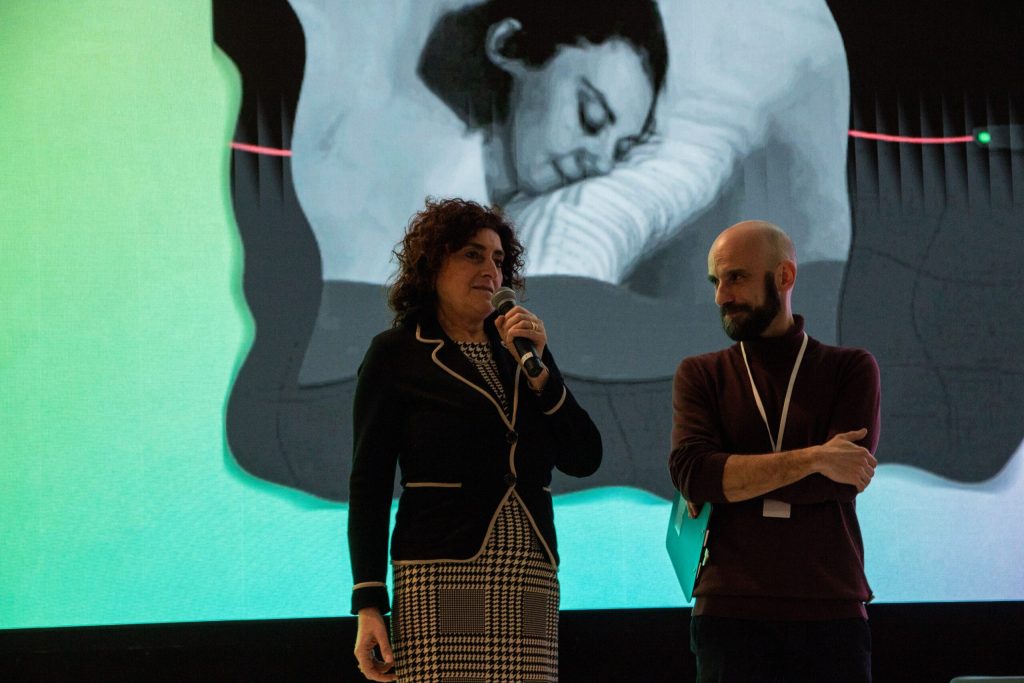
Cristina Ambrosini, Head of the Cultural Heritage Department of the Emilia-Romagna Region, added that “The theme of artificial intelligence questions us on our relation with the cultural heritage, which is not static, immobile, or belonging to others, but rather belongs to each of us. Thanks to The Models, we can explore some artistic and ethical aspects of this new way of being humans.”
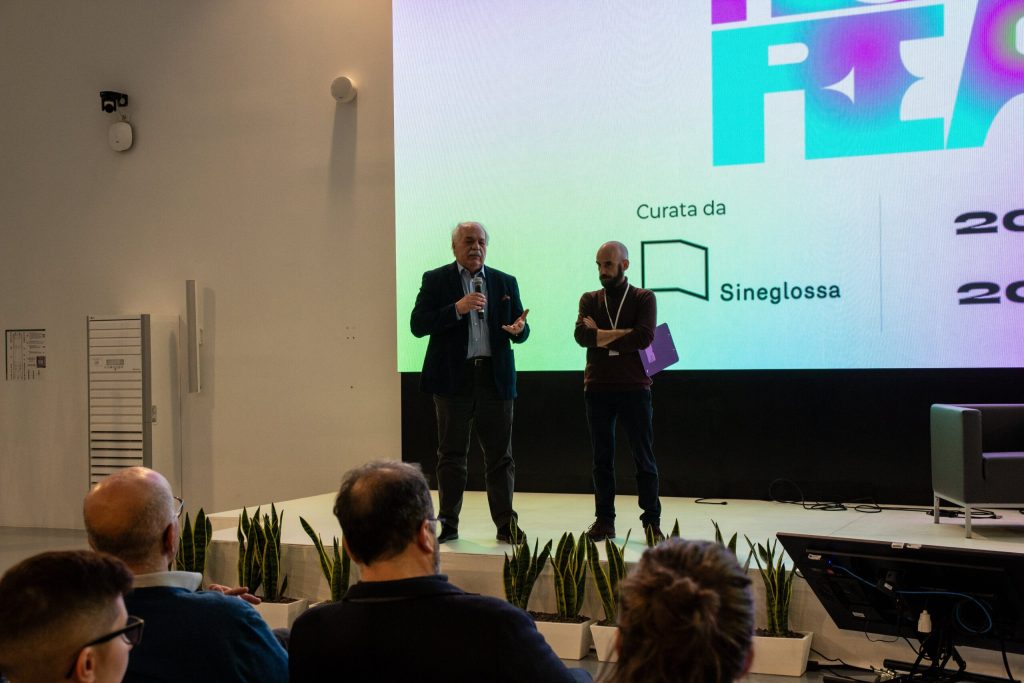
Sanzio Bassini, Director of HPC at CINECA, discussed CINECA’s commitment to use these technologies not just as search engines but also for practical applications. The Models is an example of this, as it not only addresses the phenomenon of hallucination – specific to AI technology – but also represents a new way to construct a comprehensive value chain for cultural entities in the region.”
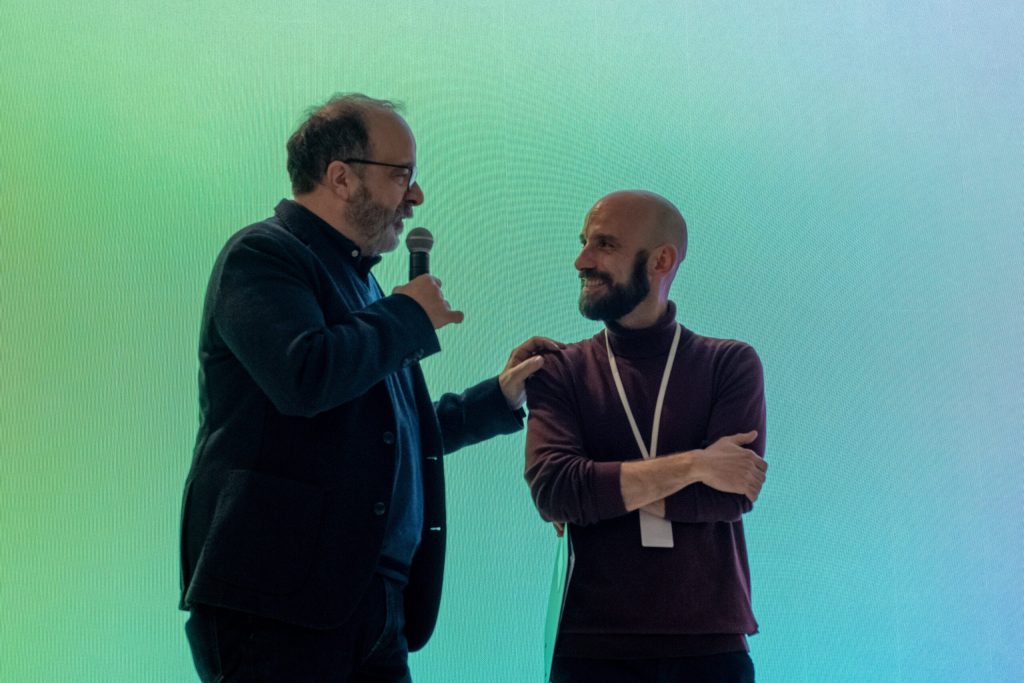
Roberto Righetti, Director of ART-ER, concluded the opening greetings by highlighting ART-ER’s interest in culture, which they intend both as an economic sector and as a key factor in urban regeneration. Indeed, the whole event was hosted in the Tecnopolo, which was opened to the public for the first time, allowing citizens to experience the relation between science and culture.
The Talk: The Enchantment of Truth
The event continued with the talk The Enchantment of Truth, which explored how our perception of reality is evolving in an era where generative AI appears to be eroding our trust in what is real. But is this fear truly justified? The discussion brought together a journalist and a magician to tackle the topic from both an informational and historical perspective.
The ability to consciously and socially accept deception makes the illusionist a fascinating interlocutor for some very contemporary dilemmas - such as how we perceive automatically generated images in an era where the ability to distinguish truth from falsehood seems increasingly compromised. Perhaps, as with past illusions, the problem does not lie in the technology itself, but in how we perceive and decode it.
Federico Bomba, Sineglossa's president
Mariano Tomatis, as he tells in his blog while reflecting on the talk, presented the strategies of wonder used in the 18th century and how illusionist machines were employed to astonish audiences and challenge the rationalist rigor of the Enlightenment.
The fear that AI is undermining our ability to distinguish between truth and falsehood stems from a debatable assumption: the belief that humanity has always had a clear-cut, binary distinction between reality and illusion, and that this ability is now suddenly in crisis.
Mariano Tomatis, wonder injector, writer and illusionist
Journalist Federico Ferrazza, director of Italian Tech, highlighted how generative AI has blurred the lines between true and false even more, mentioning the example of deep fakes and auto-generated news, phenomena that threaten trust in information. And he also spoke about AI, automation, and the loss of job value.
If a job requires asking questions, then AI can be a valuable support. But if a human job consists of giving answers, technology has evolved to the point that machines can often do it better than humans.
Federico Ferrazza, dircetor at Italian Tech
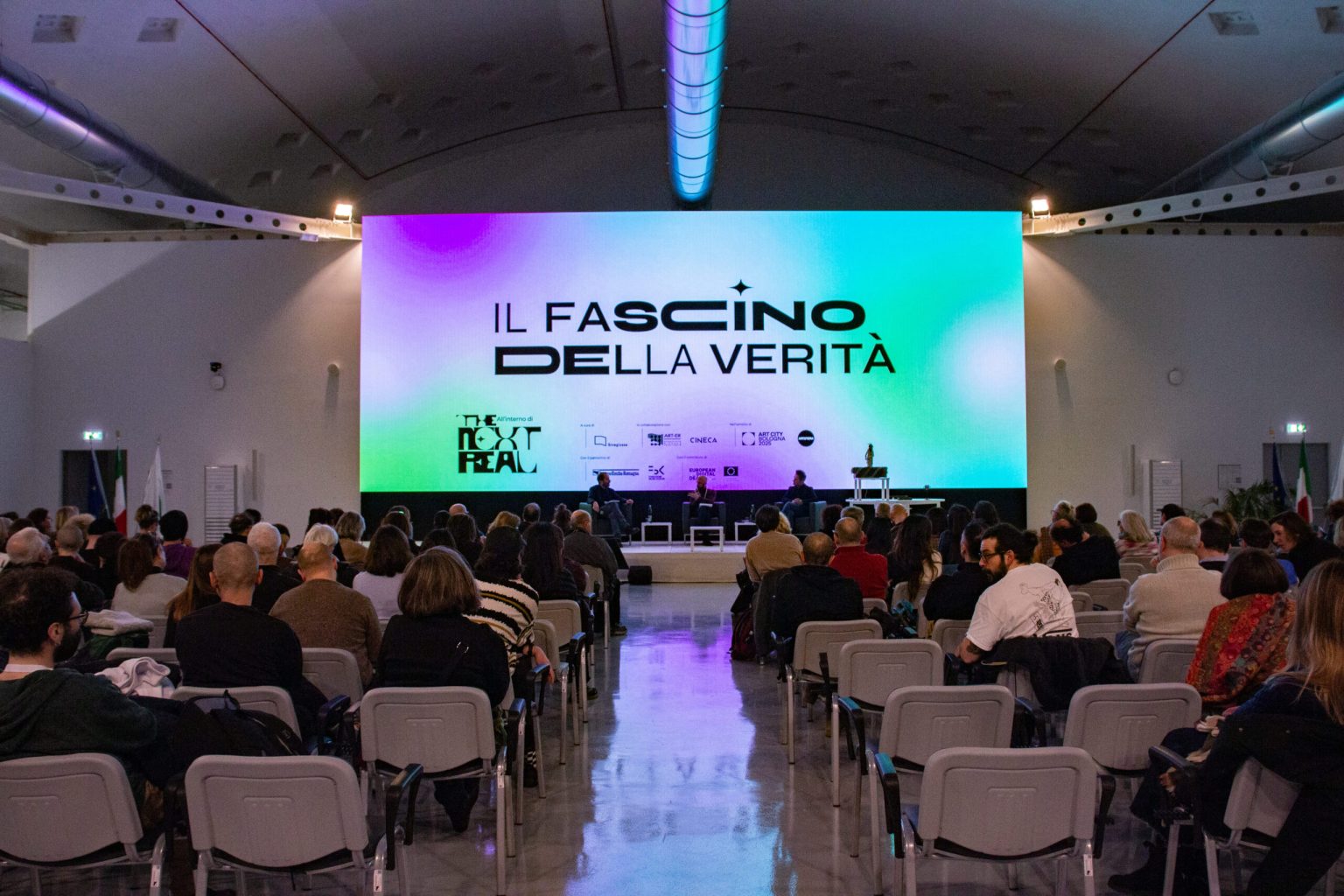
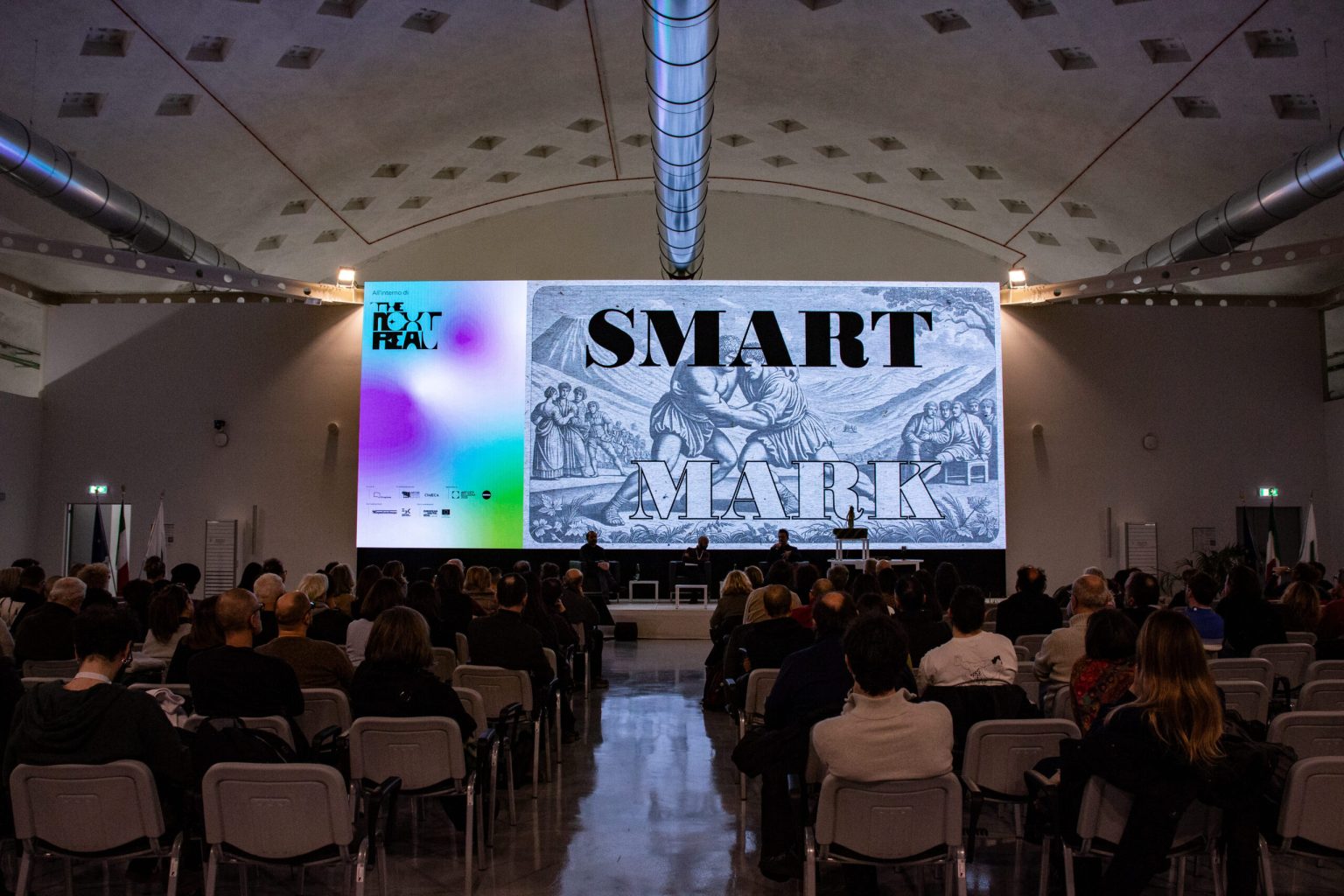
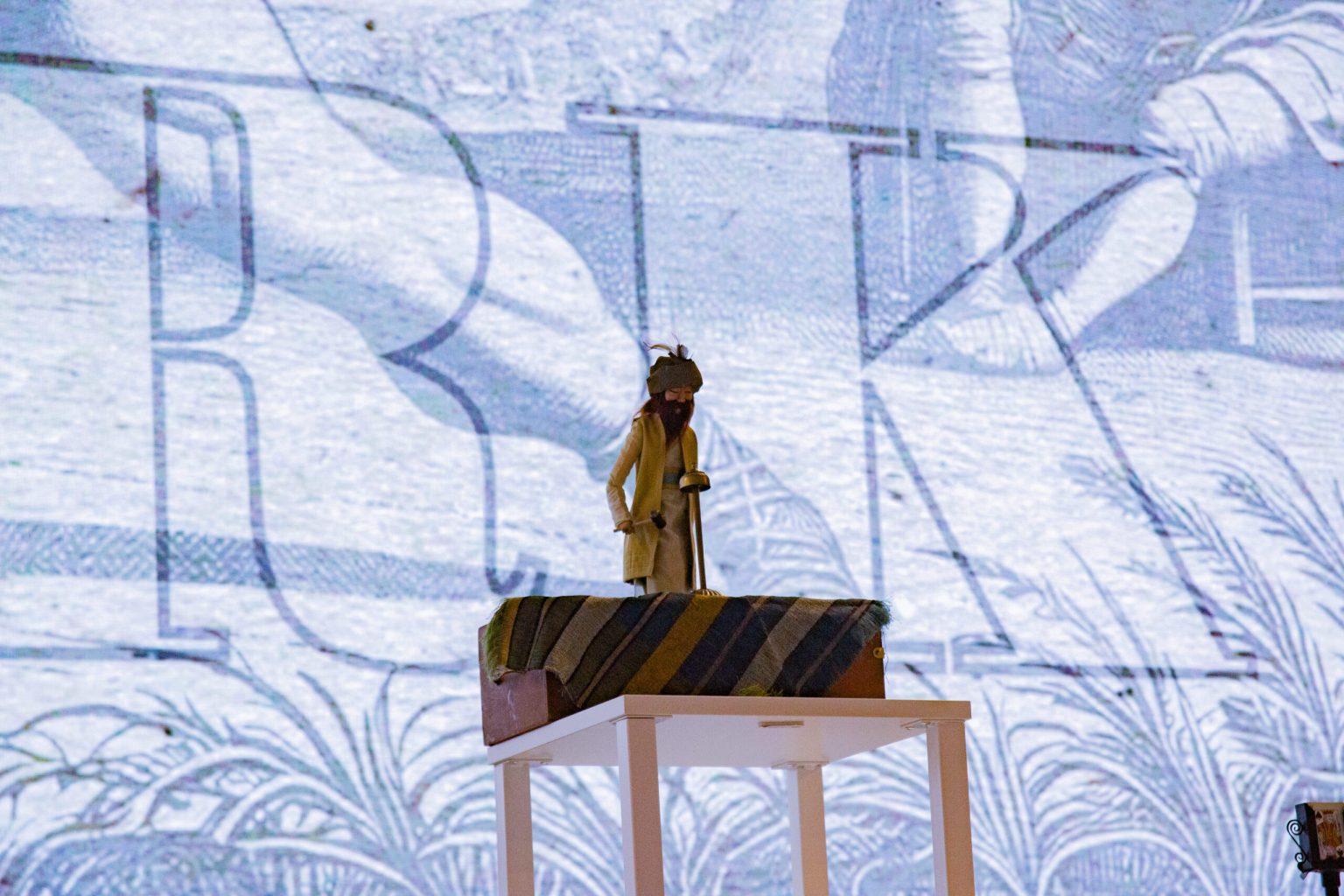
What truly frightens us today is not the inability to distinguish a rendering from an 'authentic' photograph, but rather the challenge of dealing with an increasingly fluid reality, where rigid boundaries and absolute certainties are wavering. It is the fear of having to abandon reassuring binaries - true/false, human/machine, authentic/artificial - in favor of a more layered, inclusive, and complex worldview.
Mariano Tomatis, wonder injector, writer, and illusionist

